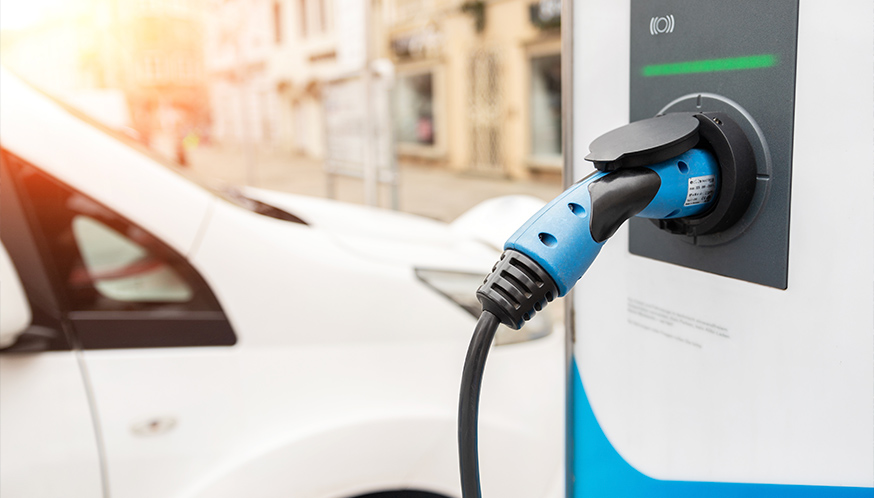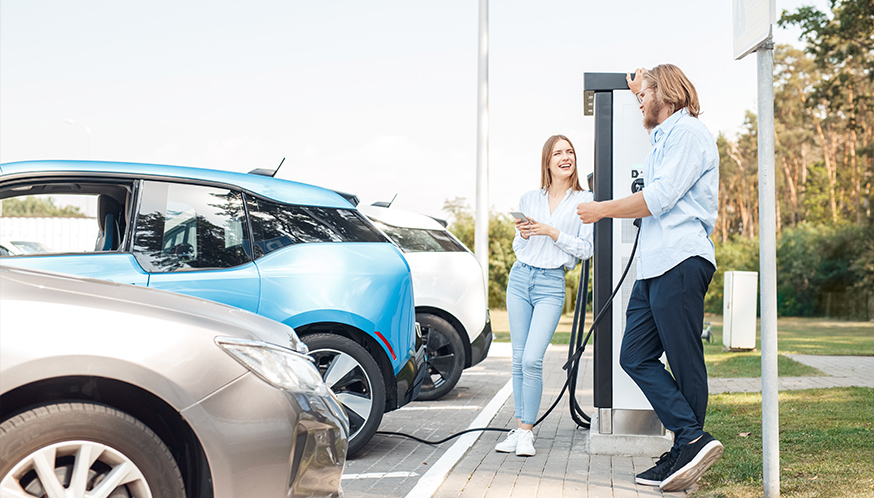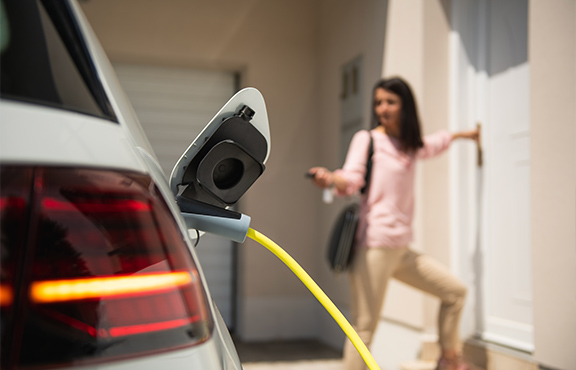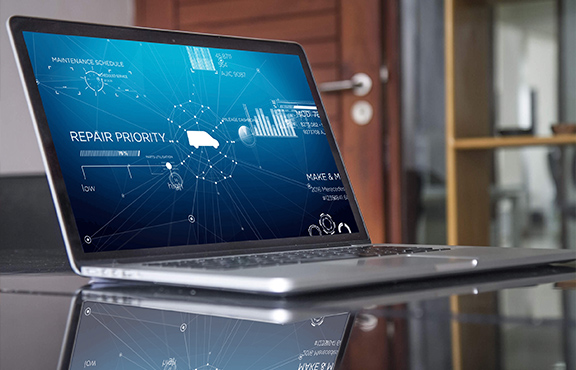-
What We DoWith our integrated fleet services, you get the entire fleet management and leasing market from a single source and can purchase, finance, manage and sell your fleet cost-effectively. And you only ever pay for what you actually use.Overview
-
ResourcesWe have a lot to share. Browse our resources library for current insights, data, strategies, and success stories from our own experts in their respective fields.Overview
-
About UsWhen Holman was founded in 1924, we set something positive in motion. Our consistent focus on people and our commitment to integrity make us who we are today.Overview
 Join Our TeamWe’re not just in the automotive business, we’re in the people business. Join us for the ride.Browse Careers
Join Our TeamWe’re not just in the automotive business, we’re in the people business. Join us for the ride.Browse Careers
ELECTRIC VEHICLE LEASING
Electric Vehicle Leasing
With the conversion of many fleets to electric vehicles, fleet managers are once again faced with the question: buy or lease? Learn more here.

More flexibility, more freedom, more options
At Holman, we only offer our customers transparent, open and flexible leases where the customer sees exactly what they are paying for. Therefore, the different models can also be the perfect basis for your switch to electric vehicles.

Why do we recommend open-end leasing for electric cars?
Open-end leasing is open leasing with flexible contracts. In simple terms, the differences to other leasing variants lie in the flexibility and in the regulation of the sales proceeds. Flexibility means that you can easily extend or shorten the term of the contracts. Or that the number of kilometers driven does not have to be fixed in advance. This is often very practical, as the exact usage of a fleet is difficult to predict. In open-end leasing, this is quite easy, so it is the perfect leasing type for electric vehicles.
- A flexible contract is entered into when the contract is signed. Instead of often non-transparent “calculations”, an amortization schedule is agreed upon, which is maximally transparent. Since not every car is used in the same way, there is also an optimized, individual financing contract for each vehicle.
- During the term, open-end leasing offers reliably constant monthly payments, with all benefits clearly defined. The term is flexible from as little as three months: after this time, the contract can be terminated at any time by paying off the remaining debt – the vehicle is yours.
- At the end of the term, there is no reduced value settlement with us, as it does not reflect the loss in value. You can continue to drive the vehicle, sell it yourself or leave the sale to us. In any case, the proceeds are yours.

Optimize Eco-Footprint
The ecological footprint indicates how sustainably a company is behaving in relation to the environment. At first glance, there is every reason to switch to an electric fleet. But if you are really interested in the so-called eco-footprint, you also have to calculate whether the ecological footprint is actually reduced by the measures, because as always, the devil is in the details. We can advise you on these important decisions.

Reduce Costs
Many people seriously want to operate more sustainably. But are the decision-makers also prepared to accept higher costs in order to reduce CO2 consumption? Or is the company only prepared to reduce CO2 if costs are also reduced or at least remain the same? Both are possible, but with a fleet of several hundred cars, you have to do the math in detail.

Retaining employees
Company cars are in many cases tools for employee retention. Since electric cars/hybrids are trendy for image reasons and also offer tax advantages, these variants are in demand among employees. But for now, this has nothing to do with reducing CO2 levels. The suspicion of “greenwashing” is evident in the air, when there is no serious plan behind the conversion of the vehicle fleet, but the change seems fashionably motivated.

Attract customers
There is strong public interest in current efforts to reduce emissions. Companies that can demonstrate a green investment will receive preferential treatment from consumers, potential employees and clients. Many stakeholders may expect reports on your sustainability data. Holman has incorporated sustainability reporting into its fleet technology solutions offering.

Freeing the fleet from unnecessary restrictions with open-end leasing
Open-end leasing is a form of fleet financing in which …
- The useful life of the contracts can be extended or shortened without any problems, as it does not have to be specified when the contract is concluded.
- The number of kilometers driven does not have to be fixed in advance. This is often very convenient, as the exact usage of a fleet is difficult to predict.
- The leasing contract of the vehicle can be terminated at any time after three months by paying off the remaining debt.
- There is no depreciation charge, as it does not reflect the loss of value. You can continue to drive the vehicle, sell it yourself or leave the sale to us. In either case, the proceeds are yours.

We will help you to find a suitable solution - feel free to contact us!
Get In Touch
×
Electrical Vehicle Leasing Frequently Asked Questions
-
What are the advantages of leasing electric cars compared to buying them?
Compared to buying,electric vehicle leasing can have financial advantages. The purchase price does not have to be paid in full, and in most cases leasing can even be arranged without any down payment at all. The money saved can then be used elsewhere, for example for investments. When purchased, company cars are part of the company assets that must be reported in the balance sheet, and their acquisition costs may not be claimed immediately. If the fleet vehicles are sold at the end of their term, the proceeds are taxable as extraordinary profits. Keep in mind that there are many different types of leases and leasing offers, and find out in advance about the perfect lease for your fleet.
-
Is it also possible to apply for government subsidies such as the environmental bonus from BAFA for electric vehicle leasing?
Owners of electric cars can apply for a government environmental bonus from BAFA (German Federal Office of Economics and Export Control). As soon as the car is registered in his or her name, the vehicle owner applies for the BAFA environmental bonus and, after successful verification, receives the cost of the special payment back in the form of the bonus. We also have a service for this.
-
What are the requirements for payment of the environmental bonus for electric vehicle leasing?
1. The leased car must be an eligible model (BAFA list of eligible models).
2. The net list price of the vehicle must not exceed 65,000 euros.
-
What are the disadvantages of electric vehicle leasing?
The advantages of a purchase fleet are that one’s own cars can be sold at any time and one can react flexibly to all events. Also, there are no contractual restrictions or reduced value accounting after the term with a purchase fleet, as is the case with closed-end leasing, which is common in Germany. This leasing contract runs for several years and early termination of the contract is expensive. In addition, there is the threat of hefty additional payments if the agreed mileage is exceeded. On the other hand, anyone who drives less than agreed produces unnecessary costs. However, these disadvantages can be avoided with a flexible open-end leasing contract with transparent leasing rates (see question: Why do we recommend open-end leasing for electric cars?). A leased fleet must be checked after the agreed service intervals, but this does not have to be a disadvantage, as it means that problems can be detected at an early stage.
-
Is now the right time to lease electric cars?
It is no longer unusual to build an electric fleet and lease it. In fact, electric cars are so popular that delivery times are getting longer and longer. That makes planning difficult for companies that think on a large scale. The fact that the subsidy for electric mobility has just been extended to 2024 speaks in favor of rapid implementation. Whether this subsidy will continue much longer is uncertain. CO2 certificates can also be applied for for each electrically powered vehicle. As of now, the Federal Environmental Agency is promoting electromobility through the so-called greenhouse gas reduction quota (GHG quota for short).
To give your company more planning security, it was already officially decided in November 2020 to extend the innovation premium until the end of 2025. This means that the currently applicable increased subsidies for electric vehicles can now be applied for from the BAFA (Federal Office of Economics and Export Control) until 2025 instead of until the previous deadline of 2021. It’s worth it: purchase or leasing are each subsidized by up to 6,000 euros.
However, there is also bad news for the hybrid, which is so popular with employees for tax purposes: the subsidy will be focused on electric vehicles. Plug-in hybrids will only be subsidized in exceptional cases from 2022, e.g. if they have a minimum range of 60 kilometers and 80 kilometers from 2025. In addition, the application for subsidies can only be made when the registration certificate is submitted, and therefore after delivery. For hybrid vehicles with a range of less than 60 kilometers ordered as early as 2021, this could mean that the subsidy will no longer apply if the vehicle is delivered in 2022. Take this into account in your planning.
-
Electric and hybrid - what subsidies are available that also work for leasing?
In addition to contributing to the climate friendliness of your company, the subsidy can also be worthwhile for you financially. In many cases, we are talking about sums of around 5,000 euros per vehicle. You can find the official tables here.
This applies to battery electric or fuel cell vehicles:
- Federal share incl. innovation premium (net list price less than 40,000 euros)
- Federal share incl. innovation premium (net list price over 40,000 euros) Minimum holding period
- Purchase 6,000 EUR 5,000 EUR 6 months
- Leasing term 6-11 months 1,500 EUR 1,250 EUR 6 months
- Leasing term 12-23 months 3,000 EUR 2,500 EUR 12 months
- Leasing term over 23 months 6.000 EUR 5.000 EUR 24 months
This applies to externally chargeable hybrids:
- Federal share incl. innovation premium (net list price below 40,000 euros)
- Federal share incl. innovation premium (net list price over 40,000 euros) Minimum holding period
- Purchase 4,500 EUR 3,750 EUR 6 months
- Leasing term 6-11 months 1,125 EUR 937.50 EUR 6 months
- Leasing term 12-23 months 2.250 EUR 1.875 EUR 12 months
- Leasing term over 23 months 4.500 EUR 3.750 EUR 24 months
Original table: https://www.bafa.de/DE/Energie/Energieeffizienz/Elektromobilitaet/Neuen_Antrag_stellen/neuen_antrag_stellen.html
Of course, calculating whether the introduction of electric vehicles is worthwhile is not entirely simple. But our experts have now developed decision-making formulas for this purpose. They help you better weigh decisions around finances and/or ecological footprint, so you can make optimal decisions for yourself or your management.
We will also be happy to advise you on the conditions BAFA imposes on fleets, which exemptions apply to hybrids, and how to apply for funding.
-
What criteria influence the decision in favor of an electric vehicle fleet?
In addition to driving comfort and financial benefits, experts cite three variables that must be weighed against each other when deciding in favor of e-mobility:
1. eco-footprint
The ecological footprint states how sustainably a company behaves in relation to the environment. At first glance, everything speaks in favor of switching to an electric fleet. But if you are really interested in the so-called Eco-Footprint, you also have to calculate whether the ecological footprint is actually reduced by the measures, because as always, the devil is in the details. At the beginning of this journey, most people thought that the calculation was quite simple: take manufacturer consumption, increase it by a factor of X, and that’s it – the reduced footprint. But it’s not that easy. If you want to find out the true values, you have to start with CO2 consumption during production. Even here, there are a wide variety of possibilities: Was the product produced in Germany, the USA or China and transported here? And where was your vehicle’s battery manufactured? Depending on the answer to this question, more CO2 is “produced”. The next topic is electricity consumption. What values are used as a basis? Manufacturer’s data? Results from the ADAC’s Ökotest? And which electricity mix should I assume for my Footprint calculation? It gets even more complicated with hybrids. Here, we still have to differentiate between how much is driven electrically and how much conventionally, and then simulate consumption for both. So if you really want to write valid values in your sustainability report, you have to dive deeper into the subject.
2. costs
Many people seriously want to operate more sustainably. But are the decision-makers also willing to accept higher costs in order to reduce CO2 consumption? Or is the company only willing to reduce CO2 if costs are also reduced or at least remain the same? Both are possible, but with a fleet of several hundred cars, you have to do the math in detail.
3. employee loyalty
Company cars are, in many cases, employee retention tools. Since electric cars/hybrids are trendy for image reasons and also offer tax advantages, these variants are currently extremely sought after by employees. But for now, this has nothing to do with reducing CO2 levels. The suspicion of “greenwashing” is in the air, when there is no serious plan behind the conversion of the vehicle fleet, but the change seems fashionably motivated.
The bottom line is that electromobility is new to everyone – often including the experts. There is not yet enough empirical data on consumption and production. If you are interested in a serious analysis, our e-mobility consultants can help you with advice and calculation tables.
Related Services

Electromobility
Together with you, we develop a long-term sustainability plan for your fleet and support you in the implementation to strategically convert your fleet from combustion engines to e-vehicles in this way.

Technology and Data Intelligence Services
Holman uses Big Data to deliver actionable insights to help you reduce costs, streamline processes, and gain a clear view of your fleet’s operations.

Vehicle Management
Our fleet management services help you use and maintain all aspects of your fleet to save time, control costs and avoid downtime.
It looks like you've navigated to our Holman DE-EN website and are located outside of this region. Would you like to continue or select a different region?
✕


